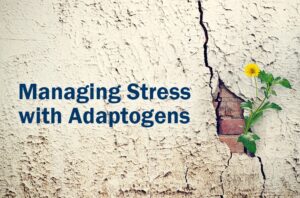Energetix | Emily Greene-Hartsfield, ND
Our bodies are constantly bombarded by outside influences, and the major defense is our own immune systems. The immune system is a complex network of many cells, tissues, and organs which act in concert to shield and defend the body from the outside world. The digestive system, particularly the gut, is a crucial part of the immune system’s network.

What is MALT?
More than 70% of the body’s immune system is located in the gut! This major immune defense in the gut is called GALT, gut associated lymphoid tissue. Here you can find a host of lymphoid tissue, lymphocytes and other cells. GALT is part of the larger mucosa-associated lymphoid tissue (MALT) which is an immense system of lymph tissue found in various submucosal membrane sites of the body such as the respiratory system, mouth, gut, eyes and skin. In this lymphoid tissue there is a host of immune defending cells such as B lymphocytes, T lymphocytes, and macrophages. Not only does the gut act as a barrier for the body, it is also where initiation of the immune response occurs, protecting the body against foreign bacteria, viruses, and unfortunately in some cases the foods we eat.
So, GALT is just MALT that is located within the gut. Within the layers of the gut mucosa, the defender cells, particularly M cells, survey particles that enter the gastrointestinal system. The defender cells help to regulate intestinal homeostasis, maintain epithelial barrier function, respond to infection, and regulate adaptive and innate immune responses.

Why GALT is Important?
The gut associated lymphoid tissue that lines the intestinal tract covers an area of approximately 180 to 300 meters. This tract is called a lumen and is actually considered to be outside of the body! This is because it is open to the outside at both ends. In this way the gut actually acts as a barrier between the outside world and the world inside our bodies. Almost everything with which the body comes into contact eventually ends up in the gut. The gut surveys everything it encounters and, when capable, forms an appropriate immune response as needed.

An immune response occurs when the body encounters antigens. Antigens are small structures located on foreign materials such as microbes, toxins, and foods which bind to larger proteins called antibodies to create an immune response.
The defender cells of GALT take up the antigen, which then leads to a variety of possible responses. These responses can either lead to elimination of an offending substance or to tolerance which inhibits the immune response. The body may also become overwhelmed with insults from pathogens, possibly causing disease, or the pathogens may evade the immune response, again possibly causing disease.
When Things Go Wrong
The mucosal surface of the gut is thin, acting as a permeable barrier to the interior of the body. This permeability allows for absorption of nutrients from food. It is also vulnerable, unfortunately, to infection and damage. When working properly, the tight junctions between cells control what enters the blood stream. However, genetics, diet, and lifestyle factors may contribute to increased intestinal permeability. This is known as leaky gut. Leaky gut produces changes to the immune system, to the gut microbiome. It may cause inflammation, leading to problems not only in the digestive tract but the whole body.

Allergies and immune conditions arise when the body develops an inappropriate response to either a foreign substance or to itself. The body may respond inappropriately when there are defects in the immune system due to genetics, medications, poor nutrition, or living setting with limited biodiversity. When the immune system is not working efficiently, symptoms such as allergies, frequent colds, fatigue, skin conditions, or other inflammatory disorders may be seen.
A Healthy GALT
A healthy immune system relies on healthy lifestyle factors such as adequate sleep, exercise, and nutrition. Keeping the gut and mucosal membrane strong is one way to keep the whole body healthy. Nutrients like collagen can aid in skin repair and wound healing, ideal for aiding in gut health. Turmeric and antioxidants can help to support a healthy immune response within the gut, helping to decrease inflammation and to support the junctions between cells. This ensures there are enough nutrients to support the various enzymatic actions and metabolic processes that happen within the body. This will also directly influence the immune response and the health of the mucosal membrane. The gut is responsible for much of our immune response. A healthy GALT absorbs nutrients, eliminates waste, and prevents infection. Supporting the gut not only ensures a healthy and properly sealed mucosal lining; it also contributes significantly to a healthy immune system.

Emily Greene-Hartsfield, ND is a Practitioner Support Specialist and Quality Product Manager at Energetix Corp in Dahlonega, GA. Dr. Hartsfield earned her Doctor of Naturopathic Medicine degree from Bastyr University in Seattle, WA., received her BSc in Biology with a concentration in Medical Laboratory Science from Auburn University at Montgomery, and holds an associates degree in Bioscience Technology. During her time at Bastyr, she found her love for working with homeopathy and botanical medicine and the study of fertility, pediatrics, women’s health, and gastrointestinal disorders. She is a Certified Lactation Educator and has additional training in Naturopathic Fertility, Craniosacral Therapy, and Psychosomatic Energetic Therapy. In her spare time, Dr. Hartsfield enjoys spending time with her family, reading, traveling, baking, and hiking.




